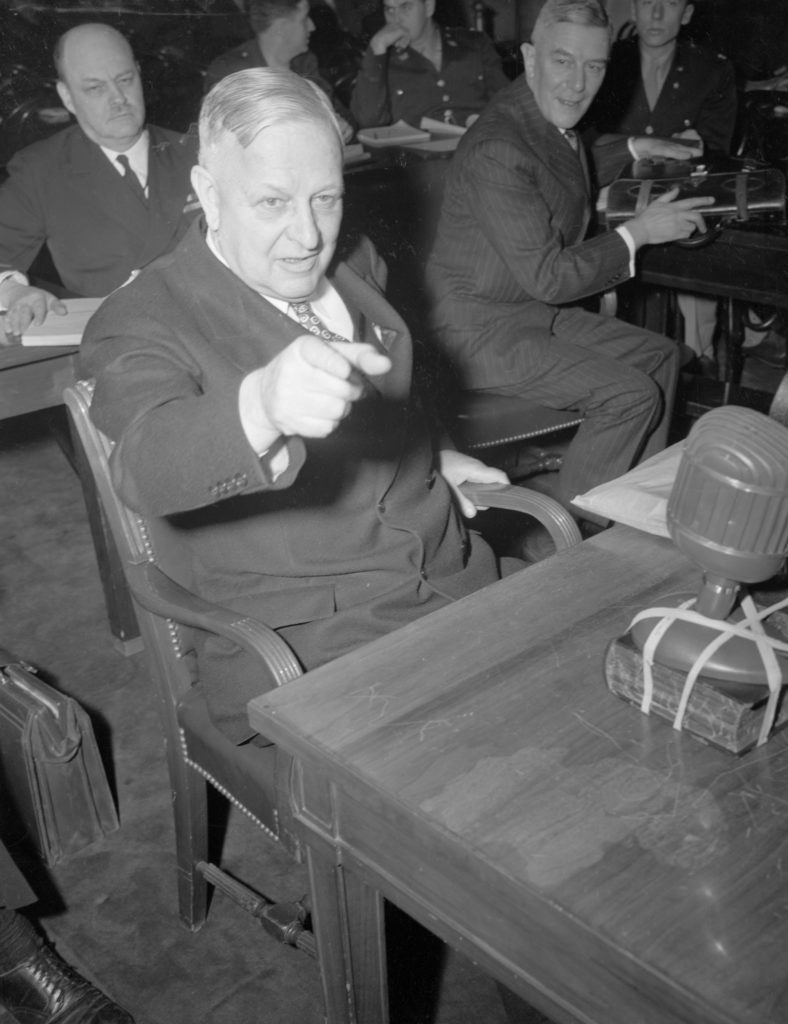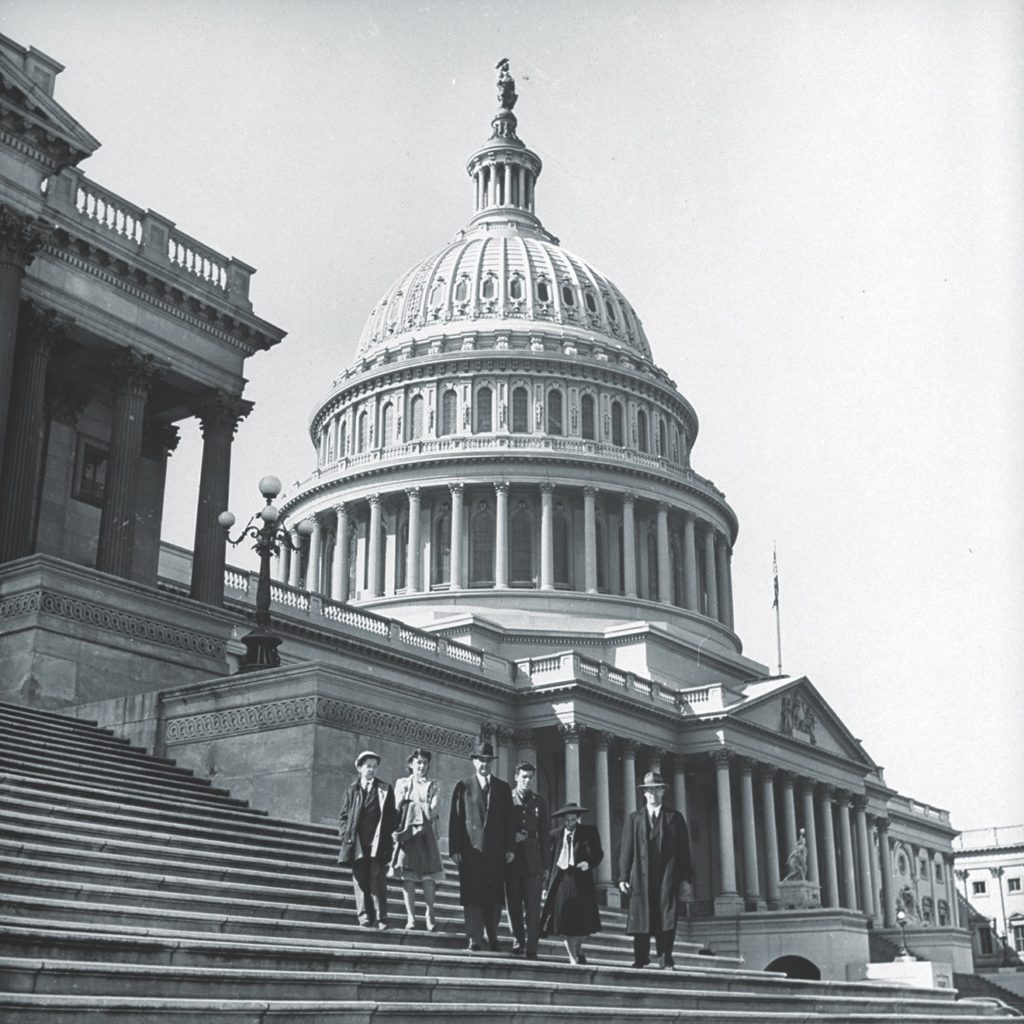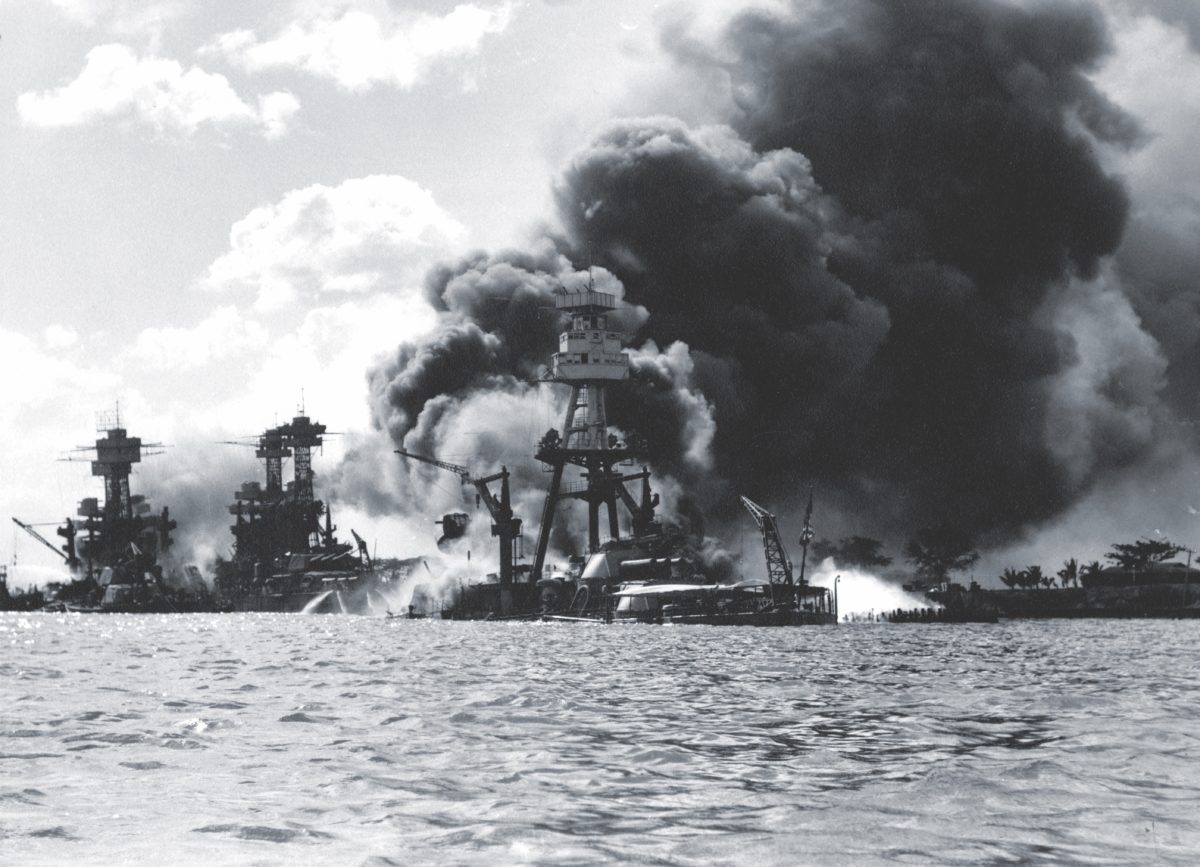FIRST LIEUTENANT KERMIT A. TYLER was the next man up on the squadron duty roster, so he resigned himself to spending the coming Sunday morning, 4 to 8 a.m., at the Aircraft Information Center at Fort Shafter on the Hawaiian island of Oahu. At 3 a.m. on that day, December 7, 1941, the 28-year-old fighter pilot drove south from his house on Oahu’s North Shore to Fort Shafter, listening to Hawaiian music on his car radio.
The Information Center was the hub of a cutting-edge system designed to warn of air attacks aimed at Hawaii. A half-dozen radar stations were located throughout Oahu, the site of several military bases including the naval base at Pearl Harbor. The radar operators’ job was to detect approaching planes and report unusual contacts to the center. Center personnel would evaluate the information and determine if the aircraft might be hostile, in which case they would scramble pursuit planes to intercept them.
The idea was sound, but the system was not yet a smooth-running operation. Pilots were randomly sent to man the center, serving as little more than warm bodies. Tyler, for example, had no training in radar—and no idea what he was supposed to do at the center. A few days earlier, he had asked his superior, Major Kenneth P. Bergquist, about his role. Bergquist only suggested that if a plane crashed, Tyler could help with the rescue operation. Even the center’s location was makeshift: a room above a warehouse, pending construction of a permanent home.
The first three hours of Tyler’s Sunday shift were uneventful, even boring. Only a skeleton staff was on duty. The officer whose job it was to identify approaching aircraft wasn’t scheduled to be there that morning, but it didn’t seem to matter because there were few planes in the air. Tyler passed the time writing letters home and thumbing through a Reader’s Digest. But at 7:20 a.m., fate intervened to ensure the young pilot an unwelcome and enduring place in history, branded as the man who had a chance to thwart the Pearl Harbor attack—but didn’t.
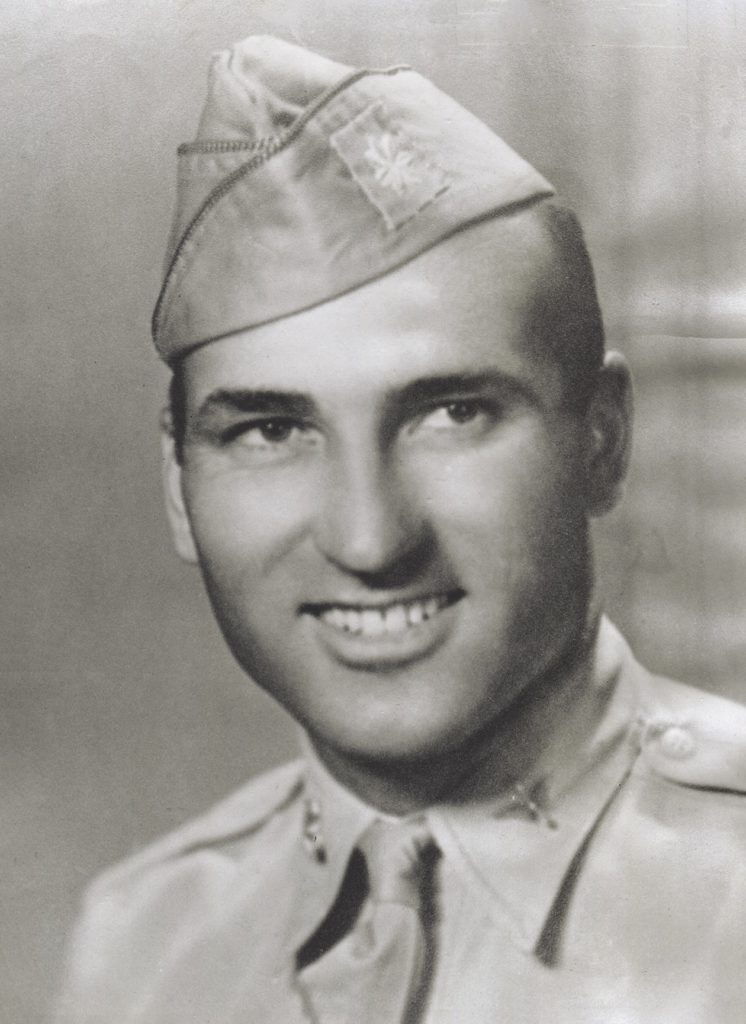
BORN IN IOWA IN 1913, Kermit Tyler grew up in Long Beach, California. After two years of college, he joined the Army Air Corps in 1936 and earned his wings the next year. In February 1941, Tyler was assigned to the 78th Pursuit Squadron in Hawaii. For a young airman, life in idyllic Oahu was “very pleasant indeed,” he said. He and future ace Charles H. MacDonald shared a beach house on the North Shore, splitting the $60 monthly rent, and Tyler took up surfing, an avocation he pursued for the next 50 years.
While Tyler and his fellow pilots honed their flying skills with aerobatics and mock dogfights in their P-40 Warhawks, other officers studied technological advances that would help win the next war. One of the most promising was known as “radio detection and ranging,” or radar. When high-frequency radio waves hit an object, like an airplane, they deflect back, producing an image on an oscilloscope screen pinpointing the object’s location. The British had pioneered important advances in the field; the previous year, radar had proved pivotal in the Battle of Britain, alerting the Royal Air Force to approaching German bombers and enabling its fighter planes to intercept them.
The advent of aircraft carriers had made even island outposts like Hawaii vulnerable, so radar became the linchpin of Hawaiian air defense. Operating at the upper end of the present-day FM broadcast band, the radar sets in use at the time, called SCR-270Bs, could detect planes more than 100 miles away. Still, they had limitations. Foremost, they could not distinguish between friendly and enemy planes. The British had technology to do that—a system called Identification, Friend or Foe—but the U.S. Army Signal Corps was still developing an American version. The SCR-270B also couldn’t discern the number of planes in a contact.
Many junior officers had embraced radar, but the higher-ups showed little interest, noted Major Bergquist, who was setting up the Hawaiian radar system. Commander William E. G. Taylor, a navy officer then working on radar in Hawaii, observed that radar was “sort of a foster child at that time, we felt.” Turf battles between the Signal Corps and the Air Corps didn’t help either, Bergquist said; the result was bureaucratic inertia, a shortage of trained personnel, and a lack of spare parts, which limited radar station operating hours to 4 to 7 a.m. each day. Even when they were active, the sets weren’t used to detect hostile aircraft. Instead, radar was used more to train for hypothetical future threats rather than for “any idea it would be real,” explained Lieutenant General Walter C. Short, the army commander in Hawaii.
By late 1941, American relations with Japan had reached their breaking point. U.S. Army Chief of Staff General George C. Marshall issued a war warning to General Short on November 27, alerting him to “hostile action possible at any moment.” Marshall also ordered Short “not, repeat not, to alarm the civil population,” so Short confined Marshall’s warning to officers he deemed to have a need to know. Short placed his command on alert—but at the lowest possible alert level, one that warned only against “acts of sabotage and uprisings within the islands, with no threat from without.”
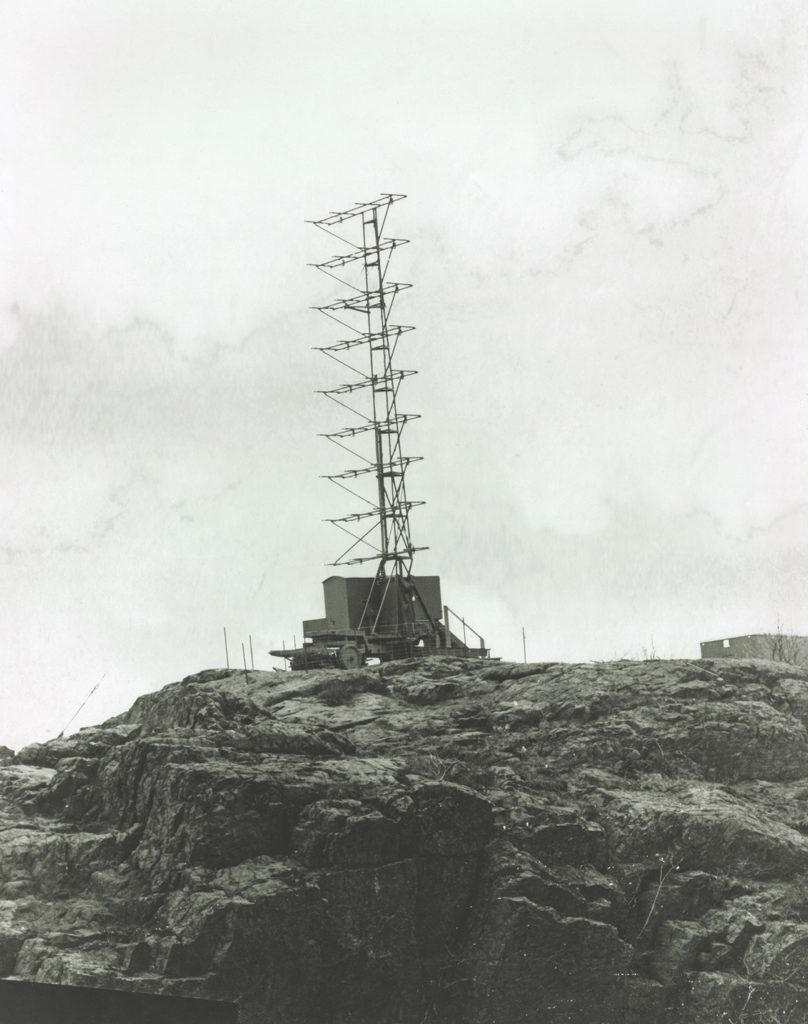
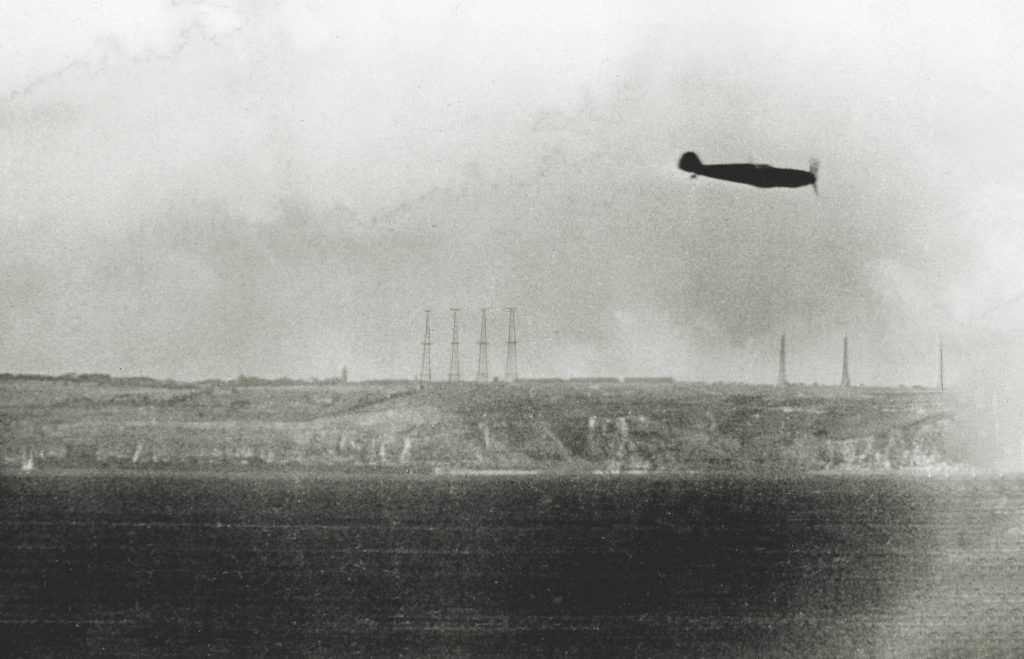
AT THE SAME TIME that Kermit Tyler started his shift on December 7, Private Joseph L. Lockard, 19, and Private George E. Elliott Jr., 23, fired up the radar station on Opana, some 30 miles north of Fort Shafter, on the upper tip of Oahu. Of the two, Lockard was the more experienced, although he had no formal schooling in radar. He operated the SCR-270B, and Elliott plotted radar contacts on a map. It was a “rather dull morning. There was not much activity,” Lockard recalled. At 7 a.m., with the day’s scheduled radar operations completed and an hour remaining in Tyler’s shift, Lockard and Elliott prepared to shut down. But the truck scheduled to bring them back to their camp was late to arrive; in the meantime, they kept the radar on to give Elliott practice operating it.
At 7:02 a.m., his eyes popped at what he saw on his screen: a large blip 132 miles north of Oahu. Lockard was surprised, too, as it was the largest contact he had ever seen—so large he initially thought the radar had malfunctioned. After verifying that his equipment was working properly, he told Elliott that it looked like a large flight of planes. The SCR-270B, however, could not ascertain how many planes were there or whether they were American. Lockard and Elliott were curious, but not alarmed. Neither had been privy to Marshall’s war warning, and neither suspected that the planes might be Japanese. Nevertheless, the contact was so unusual that Elliott thought they should report it to the Information Center. Lockard laughed and told him he was crazy; after some prodding, he relented, and Elliott made the call.
At about 7:20 a.m., Elliott reached the center’s switchboard operator, Private Joseph P. McDonald, and gave his report: “Large number of planes coming in from the north.” McDonald thought that he was alone and didn’t know what to do. When he saw that Tyler was still on duty, he had Tyler speak with Lockard. Lockard told Tyler about the contact, which was now 20-25 miles closer to Oahu, deeming it the most substantial reading he had ever gotten.
Tyler remembered the Hawaiian music he had heard on his car radio earlier that morning. He knew that the radio station, KGMB, broadcast overnight only when American heavy bombers flew in from the mainland. The air force wanted the station’s signal available as a navigation aid. That must be it, Tyler thought, and he concluded that the radar contact was a flight of friendly planes. He told Lockard not to worry about it and decided against disturbing his superior, Bergquist, who was at home. In the peacetime military, Tyler knew, lieutenants did not drag majors out of bed on a Sunday morning without good reason. That this contact might be Japanese planes was the farthest thing from Tyler’s mind because he, too, was unaware of Marshall’s war warning. In fact, from the news accounts he had read, he thought the United States’ relations with Japan had actually improved over the previous few weeks. Lockard and Elliott continued to track the planes until 7:39 a.m., when they lost them 22 miles from Oahu once the island’s topography interfered with the radar beam.
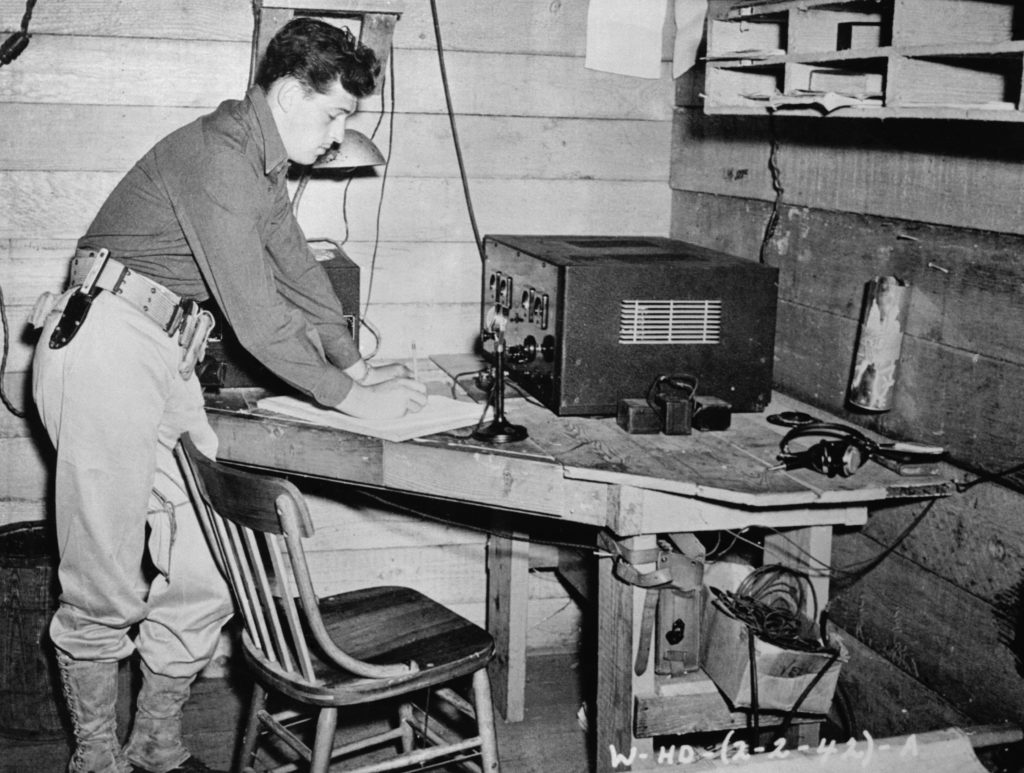
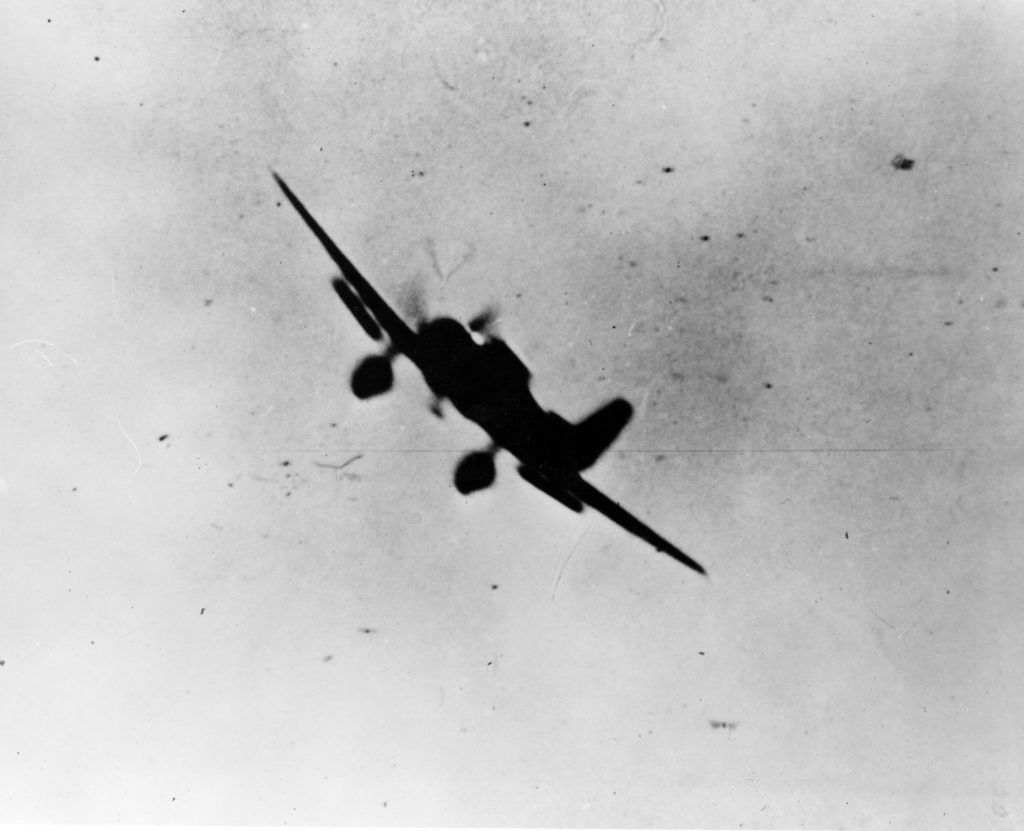
A flight of 12 B-17 Flying Fortresses was, in fact, coming in from California that morning. But what Opana had picked up wasn’t American bombers, but the first wave of Japanese planes bound for Pearl Harbor. They struck at 7:55 a.m.—35 minutes after Elliott’s call. Tyler sensed an inkling of trouble at 8 a.m. when, his shift over, he stepped out of the center for fresh air. Glancing toward Pearl Harbor, five miles away, he saw antiaircraft fire and diving planes but thought it was a drill. Five minutes later, he learned the truth when nearby Wheeler Field called to report that it was under attack.
The Japanese had achieved complete surprise. Their attack killed 2,335 American servicemen, sank or damaged 19 ships, and damaged or destroyed 328 army and navy aircraft. Since General Short’s alert had warned only against sabotage, the planes at the Hawaiian airfields had been lined up wingtip to wingtip—making the planes easier to guard against interlopers but easy prey for the Japanese attackers.
The Pearl Harbor attack was a seismic shock, and Americans could not grasp how the army and navy could have been caught so flat-footed. The tragedy became one of the most thoroughly investigated events in American history, with a presidential commission, an army board, a navy court of inquiry, and a congressional committee all trying to figure out what had happened and who was to blame. These panels focused on the commanders—Short and the Pacific Fleet commander, Admiral Husband E. Kimmel—but Tyler’s dismissal of the Opana radar contact did not escape scrutiny.
IN 1942, the Roberts Commission, appointed by President Franklin D. Roosevelt and chaired by Supreme Court Justice Owen J. Roberts, took testimony and cleared Tyler, noting he had firm reason to believe that the approaching planes were American. Tyler’s commander, Brigadier General Howard C. Davidson, backed Tyler, telling the commission that Tyler would have needed “prescience beyond the ordinary person’s capacity” to recognize the radar contact as Japanese planes.
Two years later, a Navy Court of Inquiry likewise excused Tyler’s failure to heed the Opana contact due to the SCR-270B’s inability to identify hostile planes and Short’s failure to disseminate Marshall’s war warning. That same year, however, the Army Pearl Harbor Board was more critical, chastising Tyler for failing to call Major Bergquist. Tyler “had no knowledge upon which to base any action,” the board noted, “yet he assumed to give direction instead of seeking someone competent to make a decision.” The board’s presiding officer was more understanding. Upon hearing how Tyler had arrived at the center without orders or a defined role, Lieutenant General George Grunert, a soldier since 1898, noted, “It seems all cock-eyed to me.”
The final investigation, conducted by a congressional committee from 1945-46, placed the blame squarely on General Short. Tyler’s failure to alert Bergquist would have been inexcusable had he known of the war warning, the panel concluded, but he didn’t. “The real reason…that the information developed by the radar was of no avail was the failure of the commanding general to order an alert commensurate with the warning he had been given by the War Department that hostilities were possible at any moment,” the committee concluded.
For more than a half-century, history enthusiasts have debated whether Tyler could have changed the course of history by passing the Opana radar contact up his chain of command. Would the army and navy have been better prepared to meet the attack? Navy Secretary Frank Knox thought so. In a report issued on December 14, 1941, he asserted that if the Opana radar contact had been “properly handled, it would have given both Army and Navy sufficient warning to have been in a state of readiness, which at least would have prevented the major part of the damage done, and might easily have converted this successful air attack into a Japanese disaster.”
Other factors, however, dispel the navy secretary’s conclusion. Nothing Kermit Tyler could have done would have been likely to have made a difference.
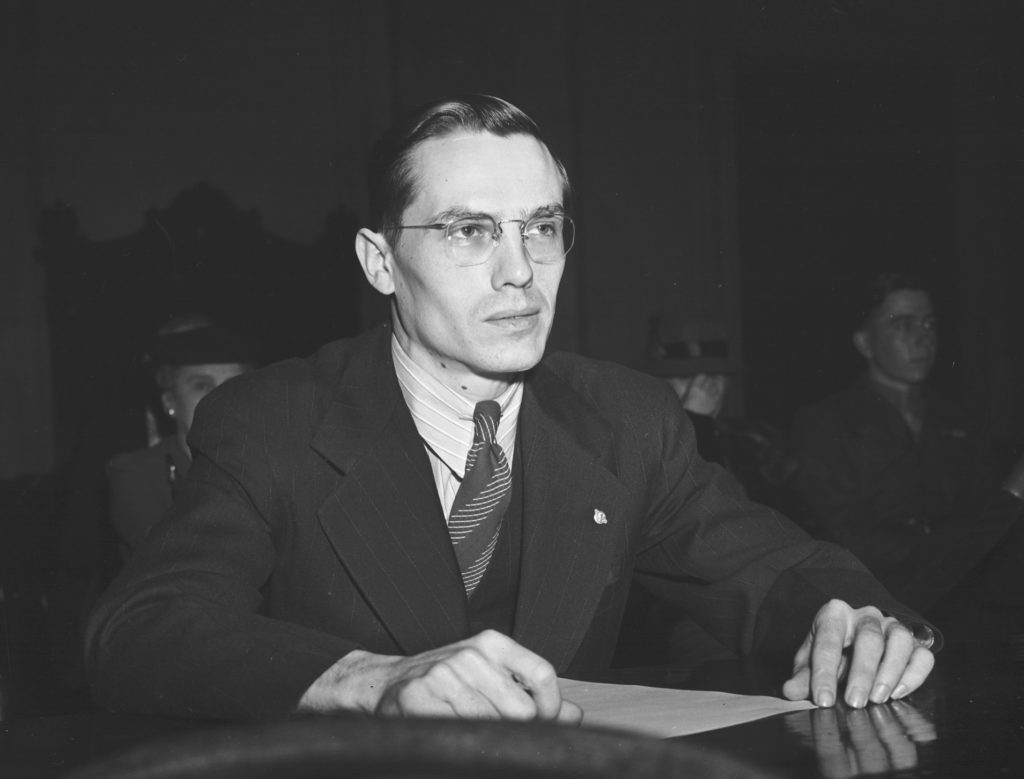
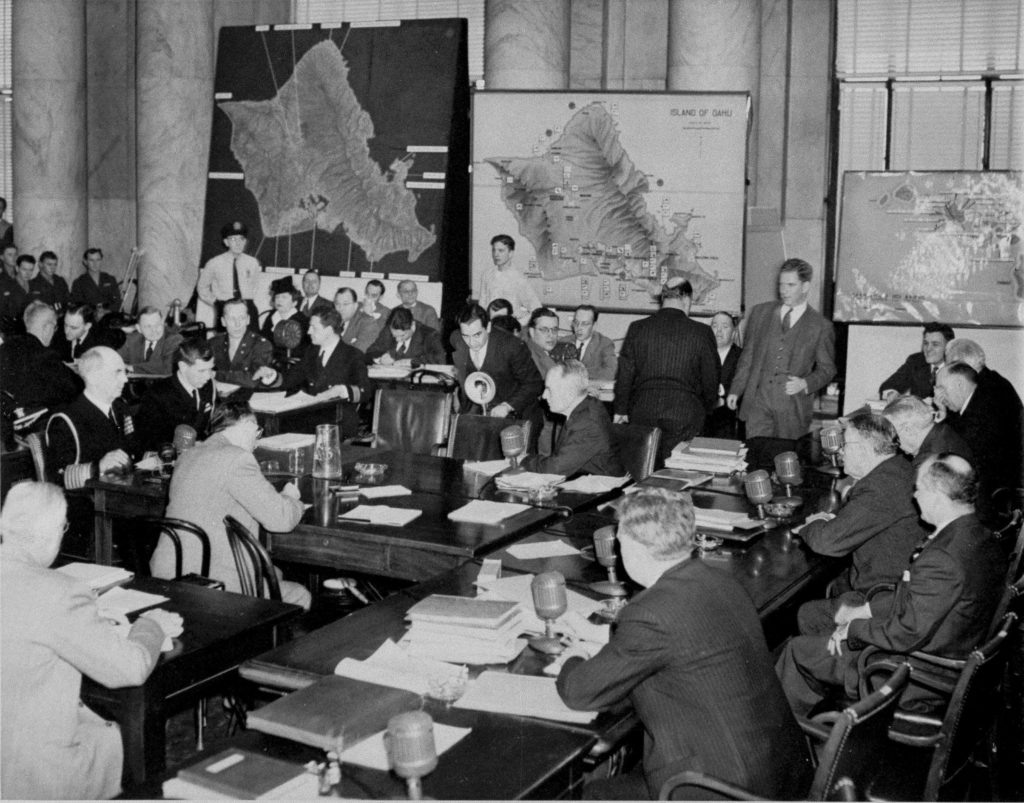
The main impediment was American complacency—what Chief of Naval Operations Ernest King later called “the unwarranted feeling of immunity from attack that seems to have pervaded all ranks at Pearl Harbor—both Army and Navy.” Japan had been viewed as a second-rate power whose planes and ships were inferior to their American counterparts. Few imagined that Japan would have the audacity to attack heavily defended Pearl Harbor—and it’s hard to be ready for an attack believed to be impossible. It took defeats at Pearl Harbor, Guam, Wake Island, and the Philippines to show the United States that Japan was indeed a formidable foe.
If Tyler had acted, he would have called Bergquist, who was home in bed and also unaware of Marshall’s war warning. For that call to have had any impact, Bergquist would have had to have believed the contact might be hostile planes and passed a warning to his superiors. Furthermore, Bergquist’s superiors would have had to have promptly issued a full alert and notified the navy. Given the hubris of which Admiral King had complained, none of these actions was likely, as another incident that December morning shows.
At about 6:45 a.m., the destroyer USS Ward sank a Japanese mini submarine near the mouth of Pearl Harbor. The Ward’s skipper reported this action to his superiors at 6:51 a.m., but naval commanders did not take the report seriously enough to issue an alert. There is no reason to believe that an ambiguous radar contact would have led army commanders to act any more decisively than their navy brethren had. Time was also short: Lockard spoke to Tyler at 7:20 a.m., just 35 minutes before the attack. Even with a prompt alert, there was too little time for ships to get underway or warplanes to get off the ground.
The most tantalizing “what if” involves an omission that cannot be laid solely at Tyler’s feet. After the attack began, more experienced officers like Bergquist and Major Lorry N. Tindal, an air force intelligence officer, took over for Tyler, although Tyler stayed on duty at the center. Due to “the shock of the attack,” the center was in “quite a turmoil,” Tindal said. No navy liaison officer was present, and no one from the army thought to tell the navy about the Opana radar contact until two days later—a lapse that Admiral Kimmel called “incomprehensible.” The Opana station’s radar plot showed the path the Japanese planes had taken to Oahu, a valuable clue to the location of the carriers that had launched them. If the navy had had that information on December 7, it might have found and attacked those carriers, Kimmel believed—but without it, the navy chased its tail, searching to the west and southwest instead of to the north.
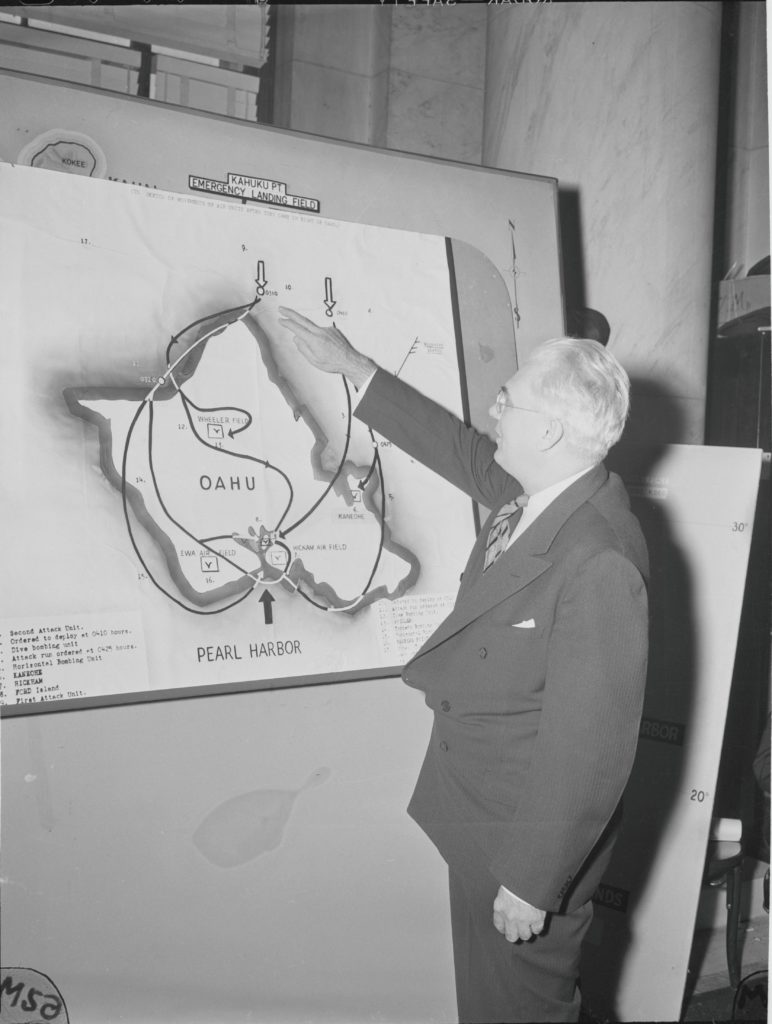
THERE WAS A WAR TO BE FOUGHT, and Kermit Tyler moved on. In September 1942, he was promoted to captain and given command of the 44th Fighter Squadron, flying combat missions in the Solomon Islands. Tyler was later promoted to major, named operations officer for the 13th Fighter Command in May 1943, and promoted to lieutenant colonel in November of that same year.
The Opana station’s Private Lockard emerged from the Pearl Harbor attack as a minor celebrity. On February 10, 1942, he was awarded the Distinguished Service Medal for detecting the Japanese planes. The press portrayed him as one of the few people on the ball on December 7, unaware that he had laughed off the radar contact until Private Elliott prodded him to report it. Lockard was commissioned a lieutenant and spent the war as a radar officer in the Aleutians; Elliott stayed out of the spotlight and served as a radar operator in the States for the war’s duration.
Radar had done its job in detecting the Japanese planes, and the brass took notice. The attack unlocked a cornucopia of resources for radar operations. “After the 7th I just had to snap my fingers and I got what I wanted,” Major Bergquist said.
But Pearl Harbor followed Tyler for the rest of his life. He remained in the air force after the war, but a postwar effectiveness report questioned his ability to react in a crisis—the kiss of death for advancement. He retired from the service in 1961 as a lieutenant colonel, the same rank he had held since 1943. Books and films have portrayed Tyler as asleep at the switch that fateful morning, and for the rest of his life he received occasional angry letters at his home from people second-guessing his performance at Pearl Harbor. When he died in 2010, newspapers across the country ran his obituary, calling him the man who had ignored the approaching Japanese planes.
Why had fate singled him out? Tyler had often wondered. He agonized over whether he should have done more, but in his heart of hearts, he knew the answer: “I could have done the same thing a hundred times, and I would have arrived at the same conclusion, given the state of alert, or lack of alert, that we were in,” he reflected in 1991. In the end, Tyler accepted that he was simply the unlucky man thrust into an impossible situation at what had unexpectedly become a pivotal moment in history, and he made his peace with it. ✯
